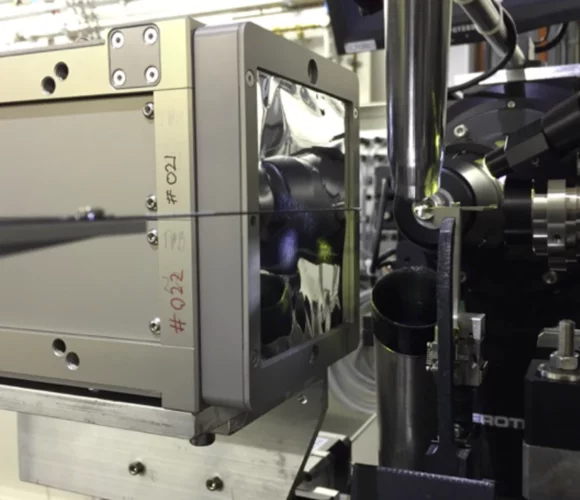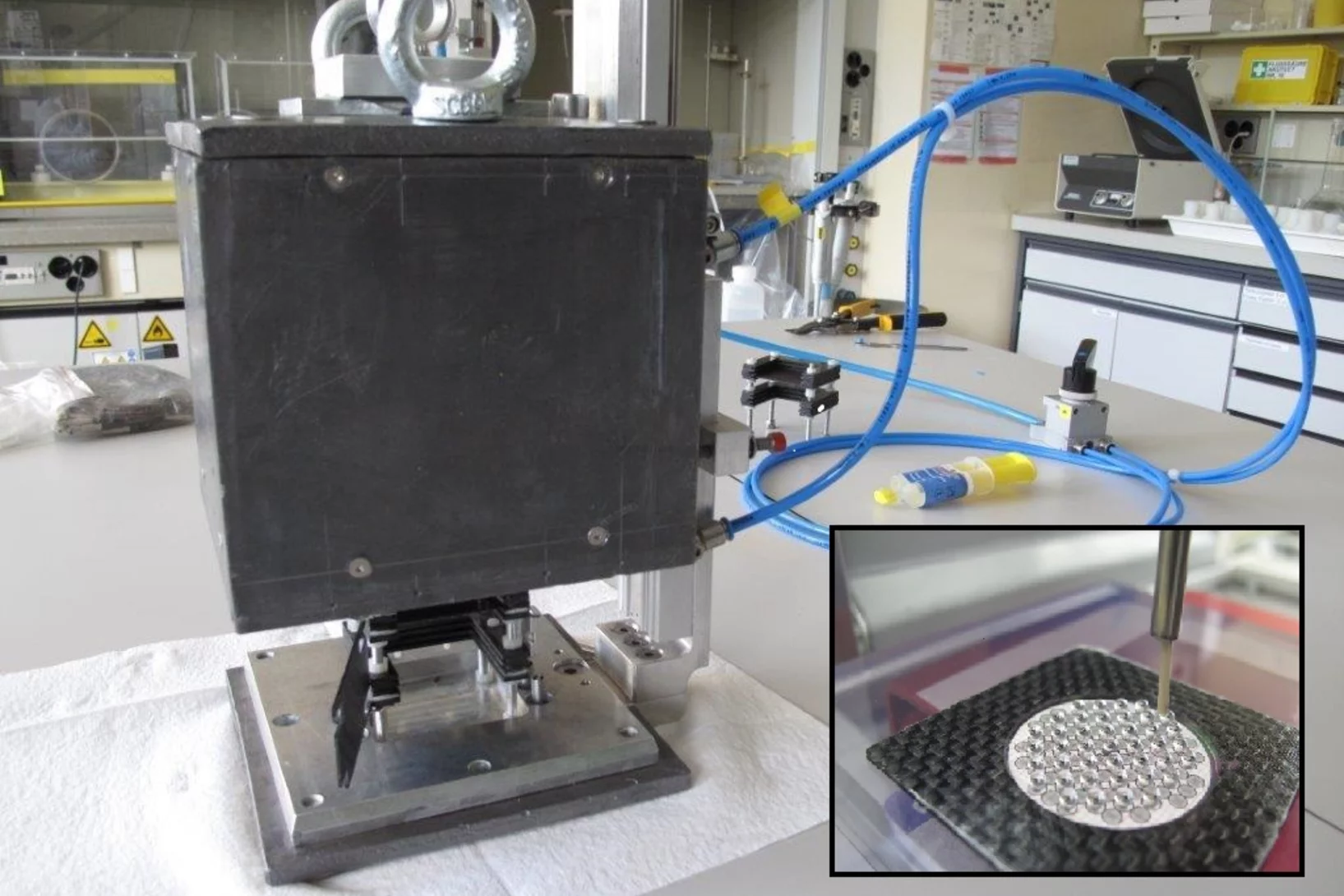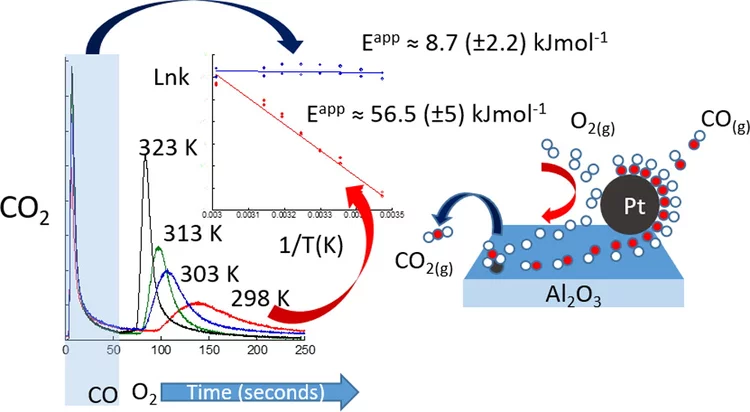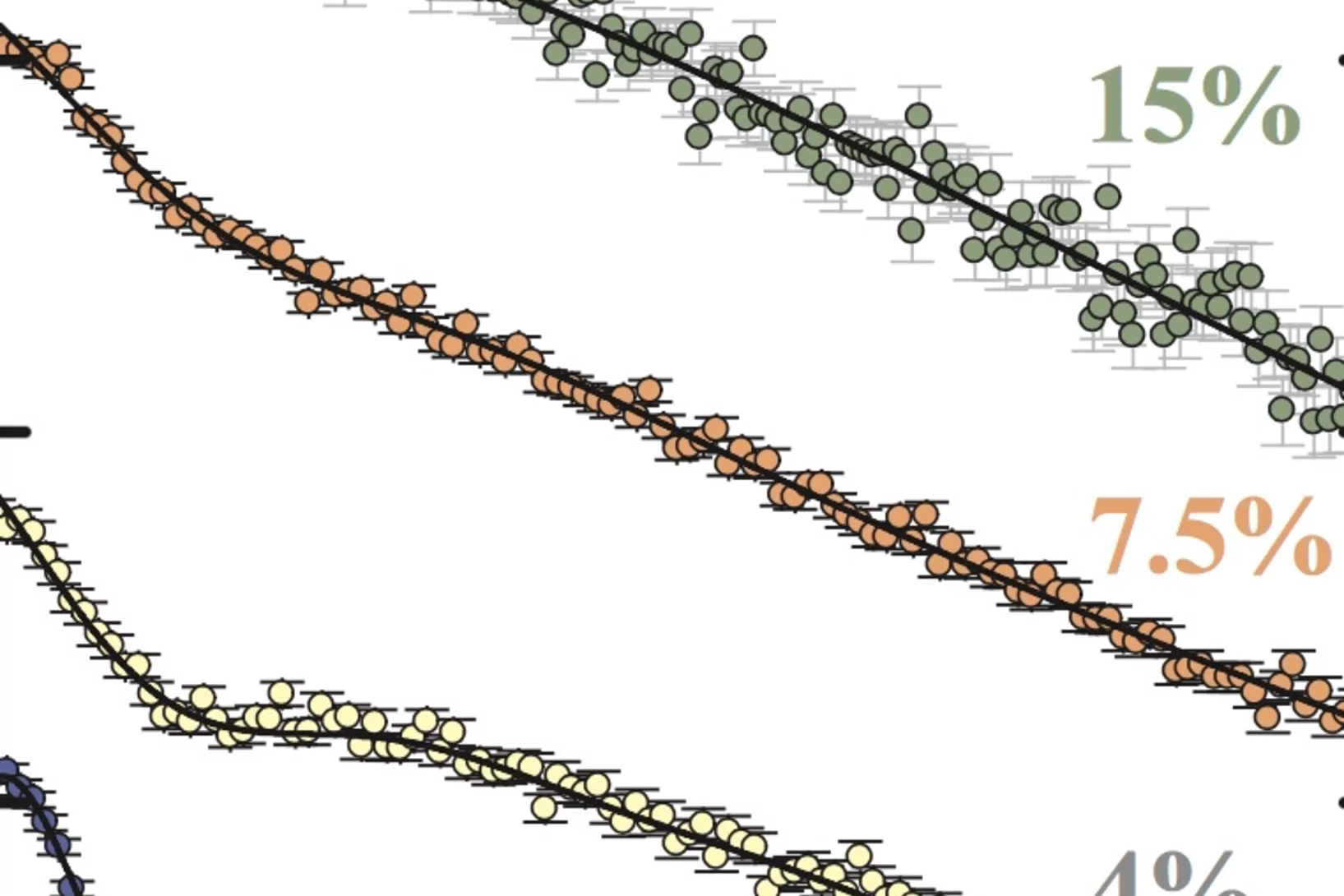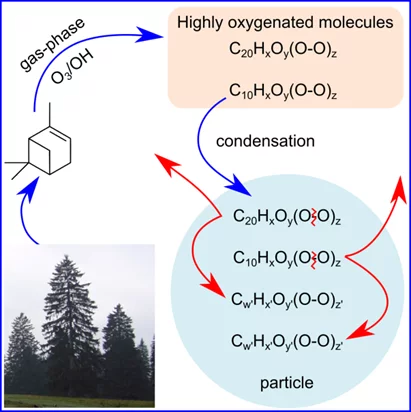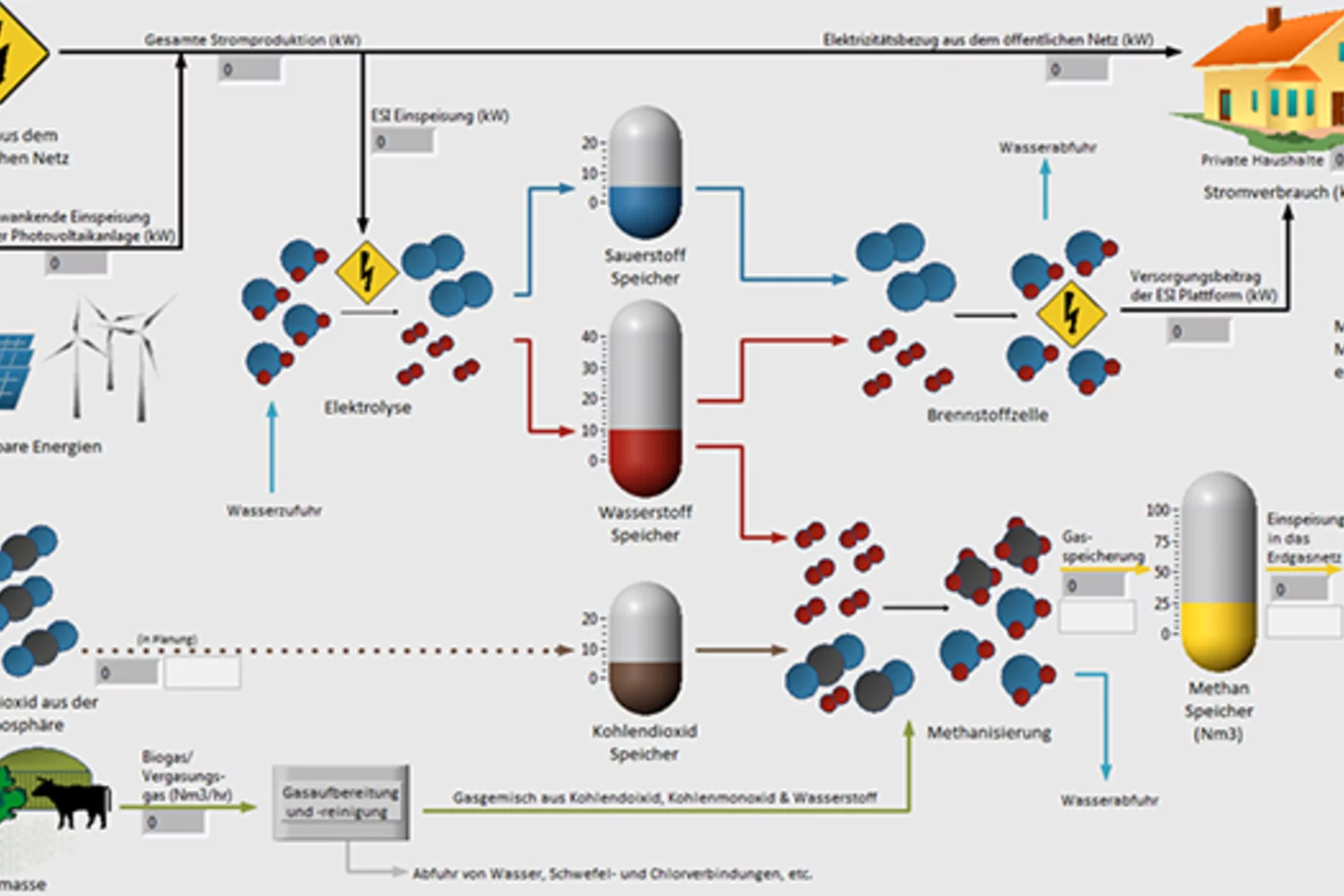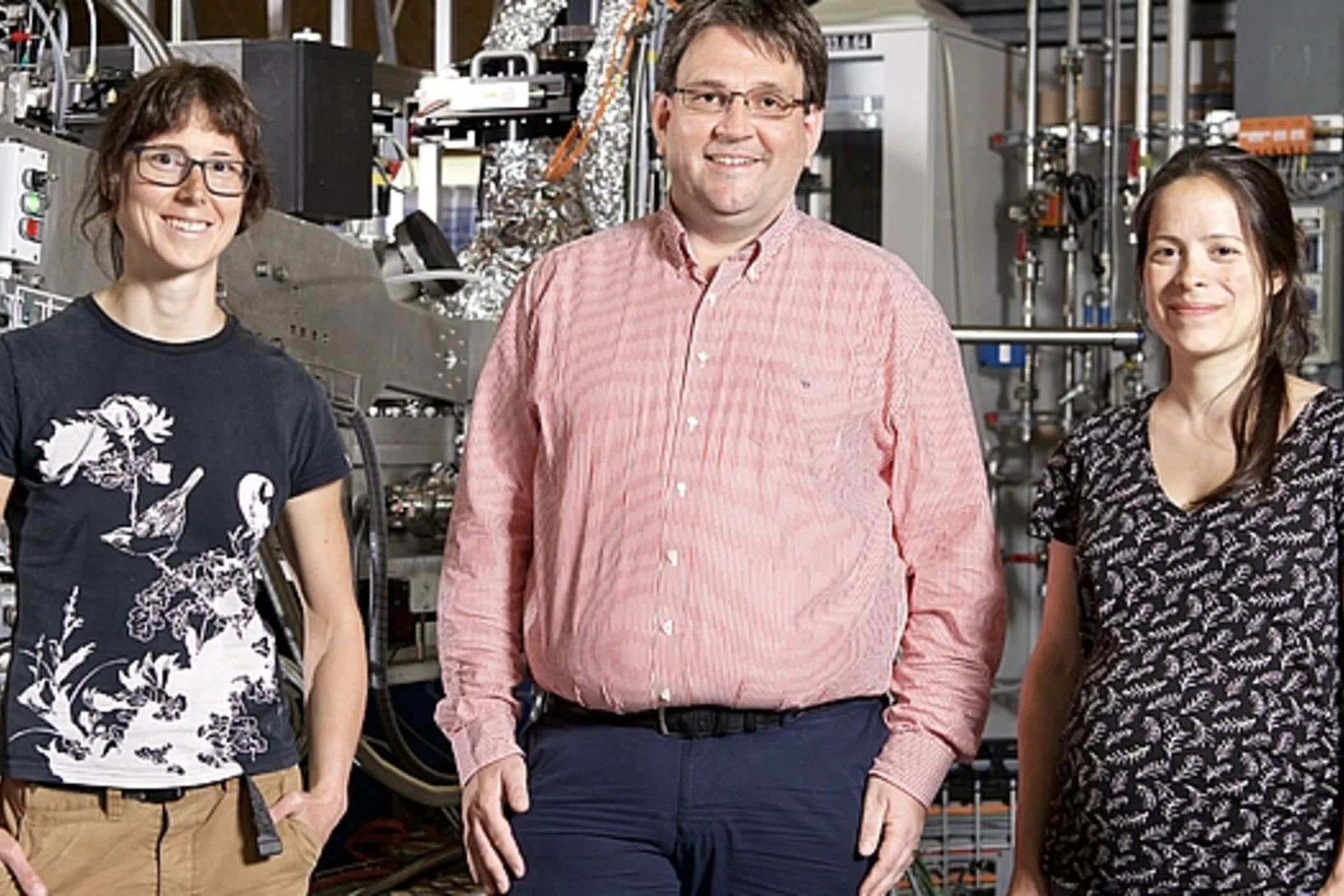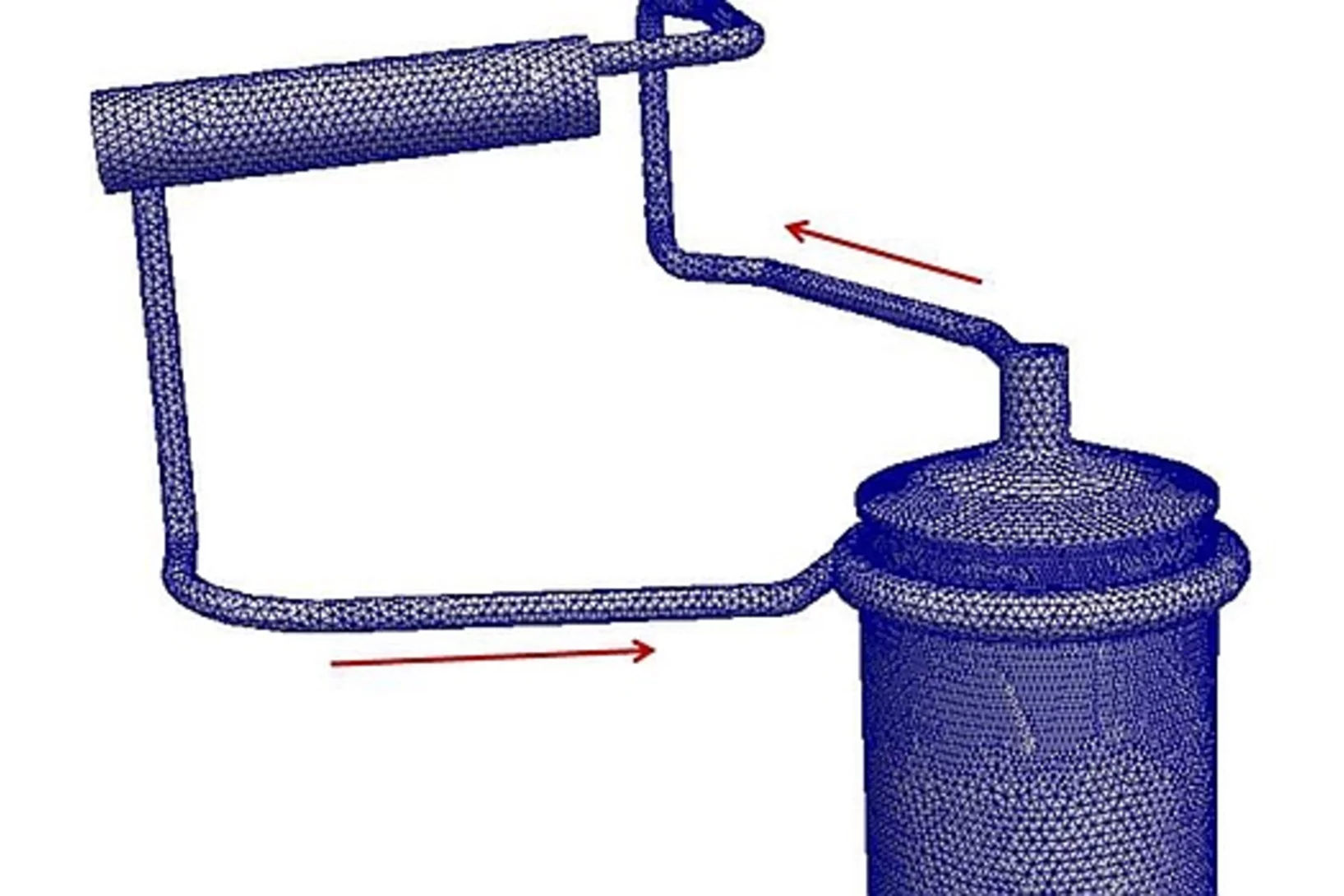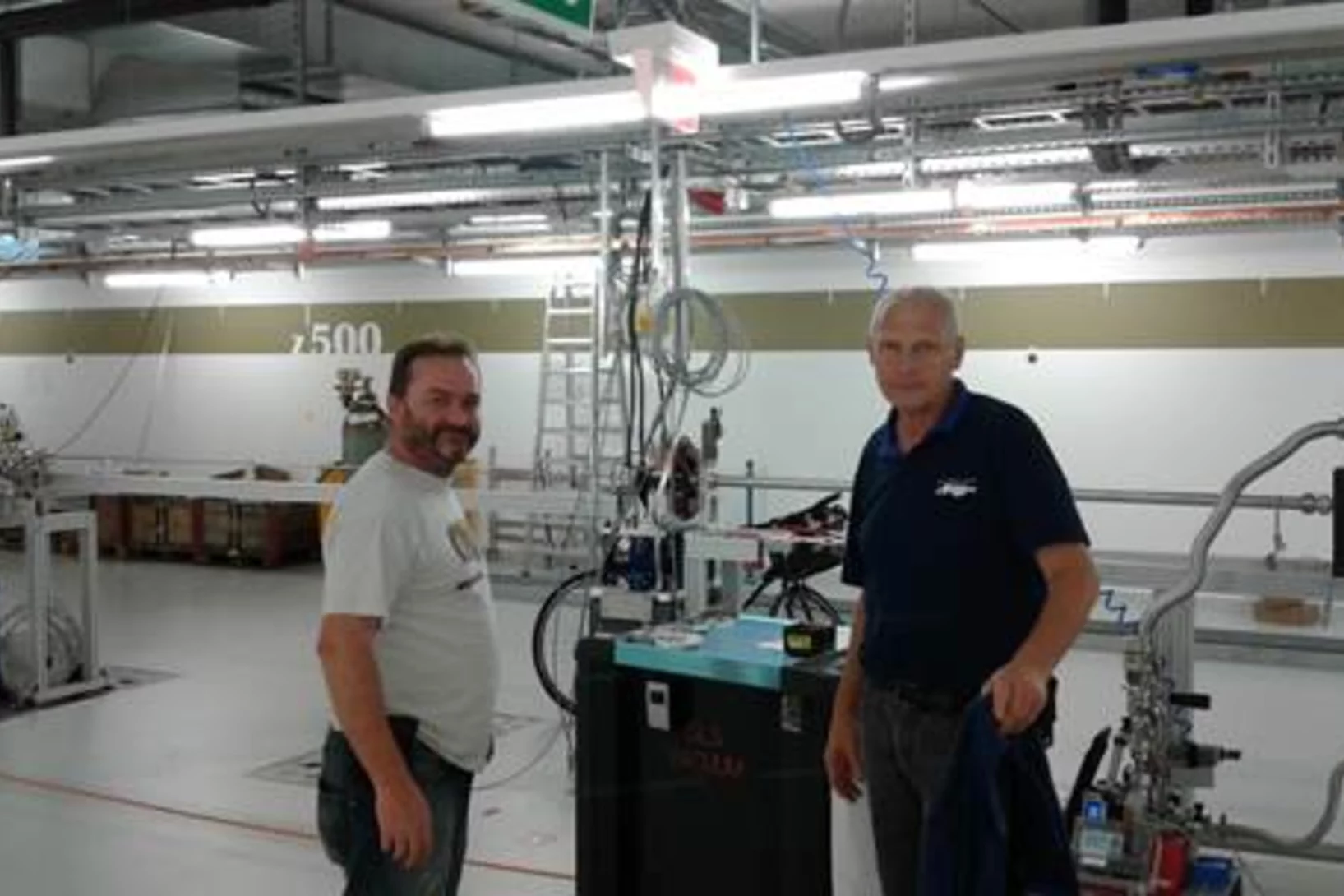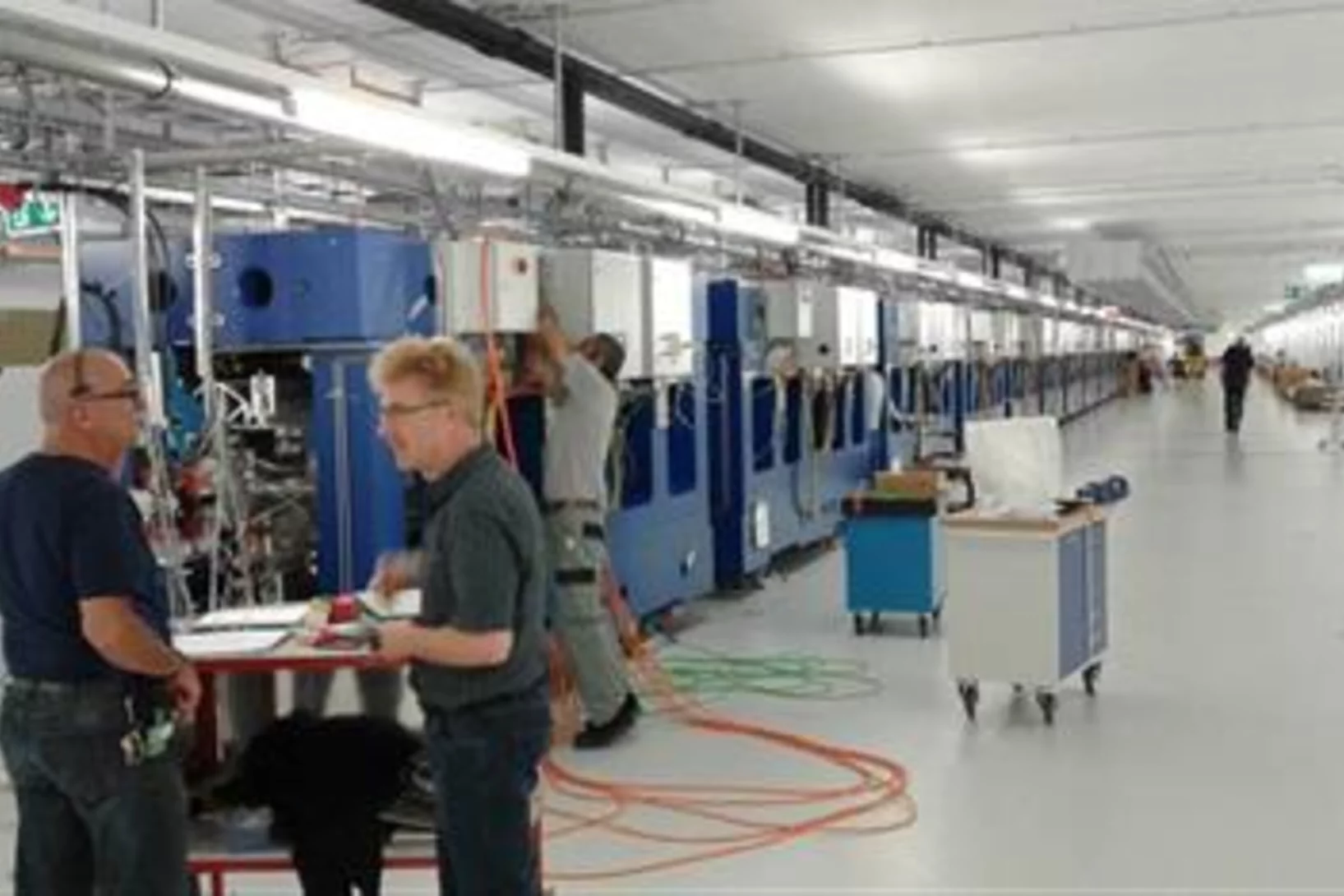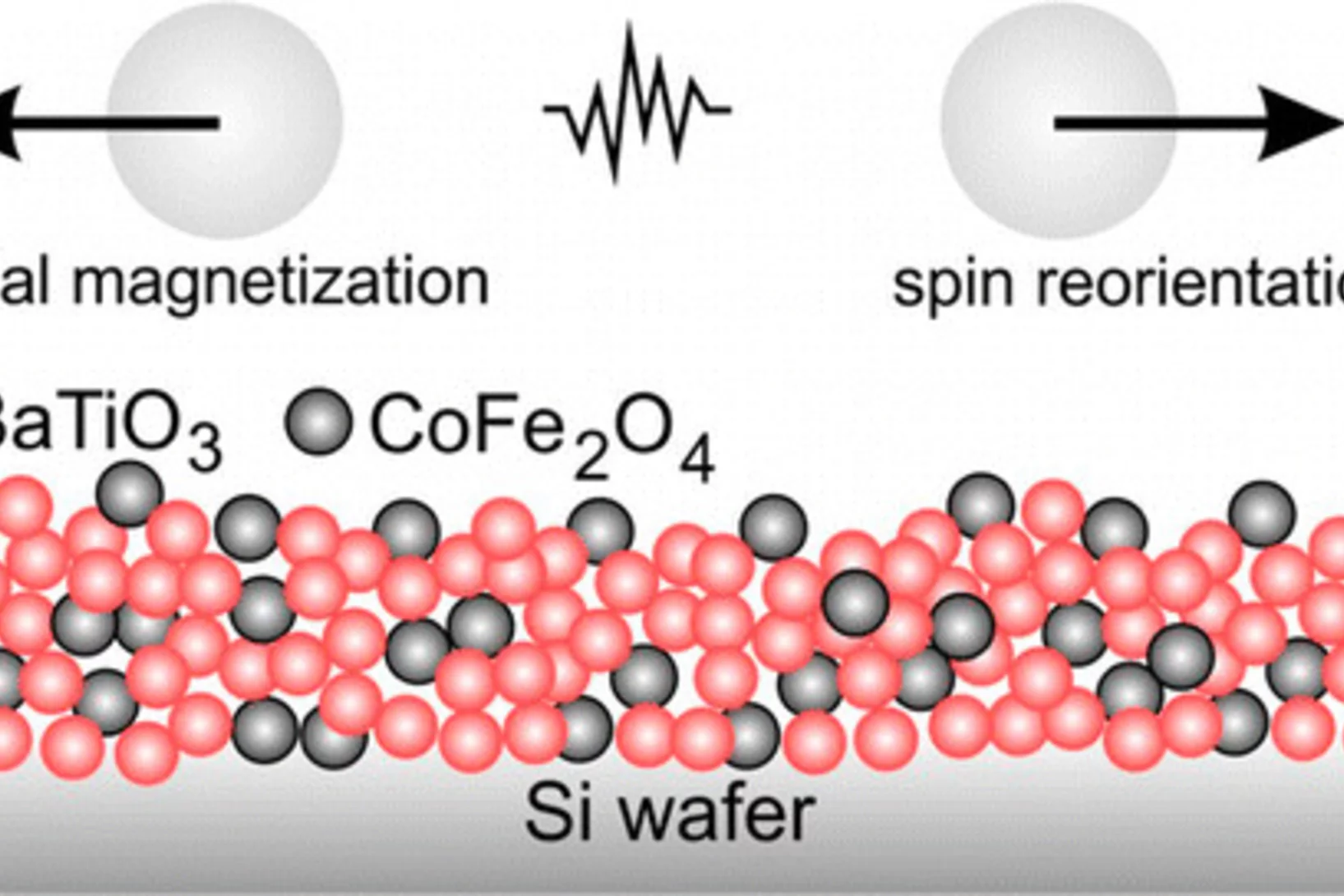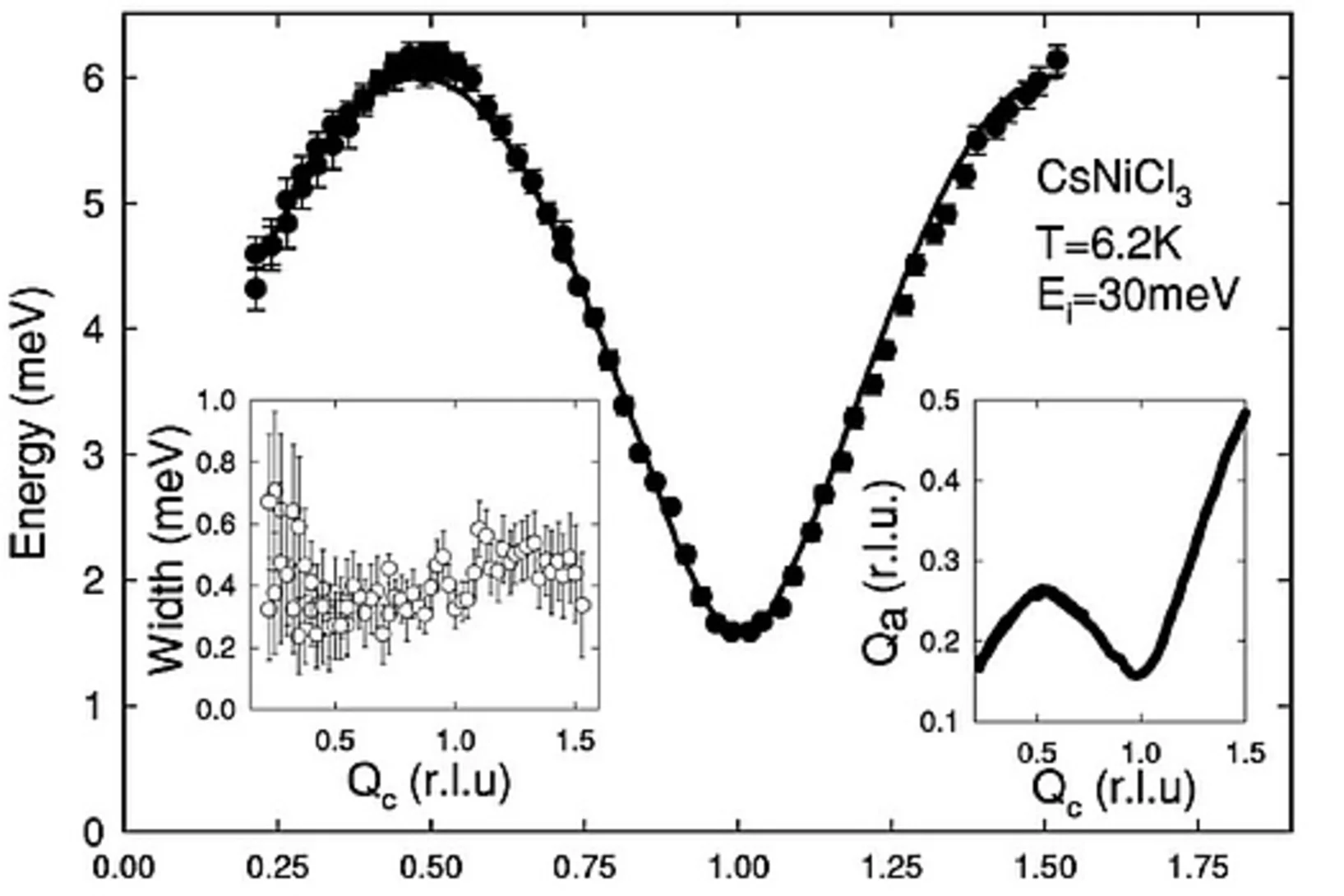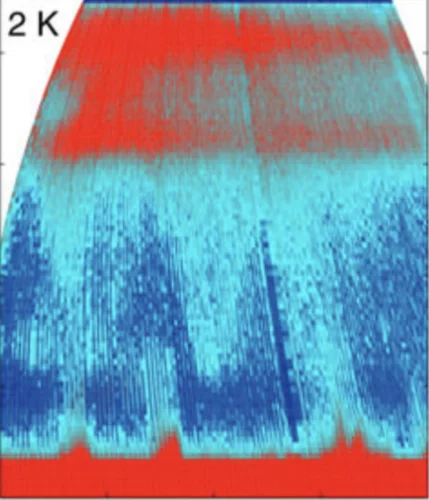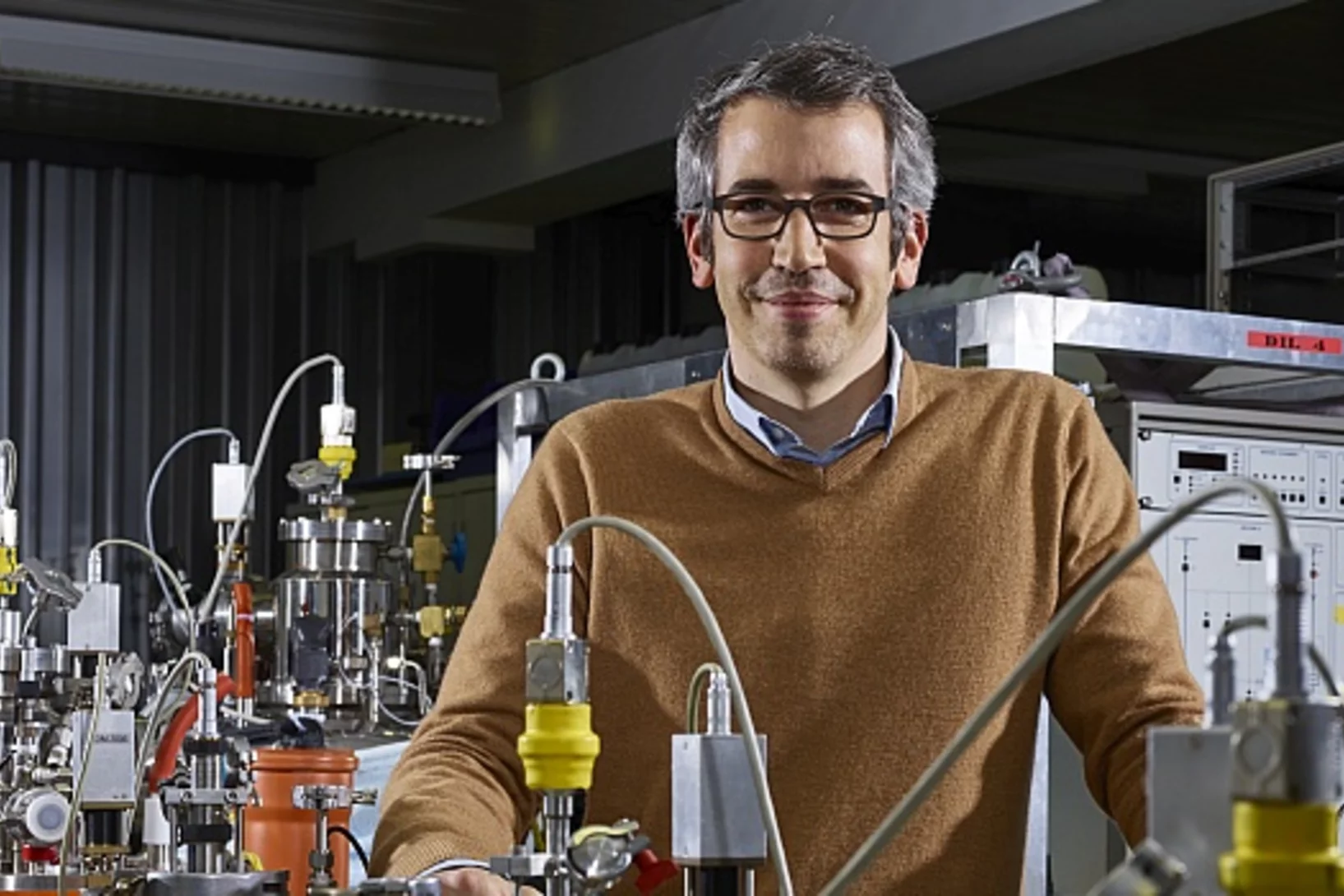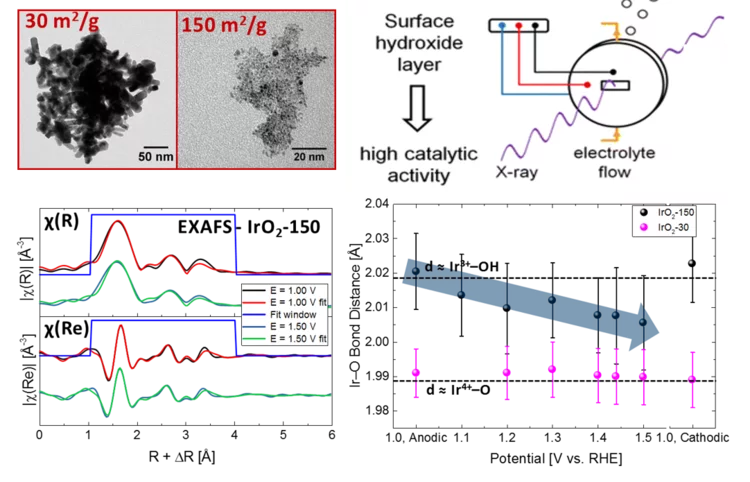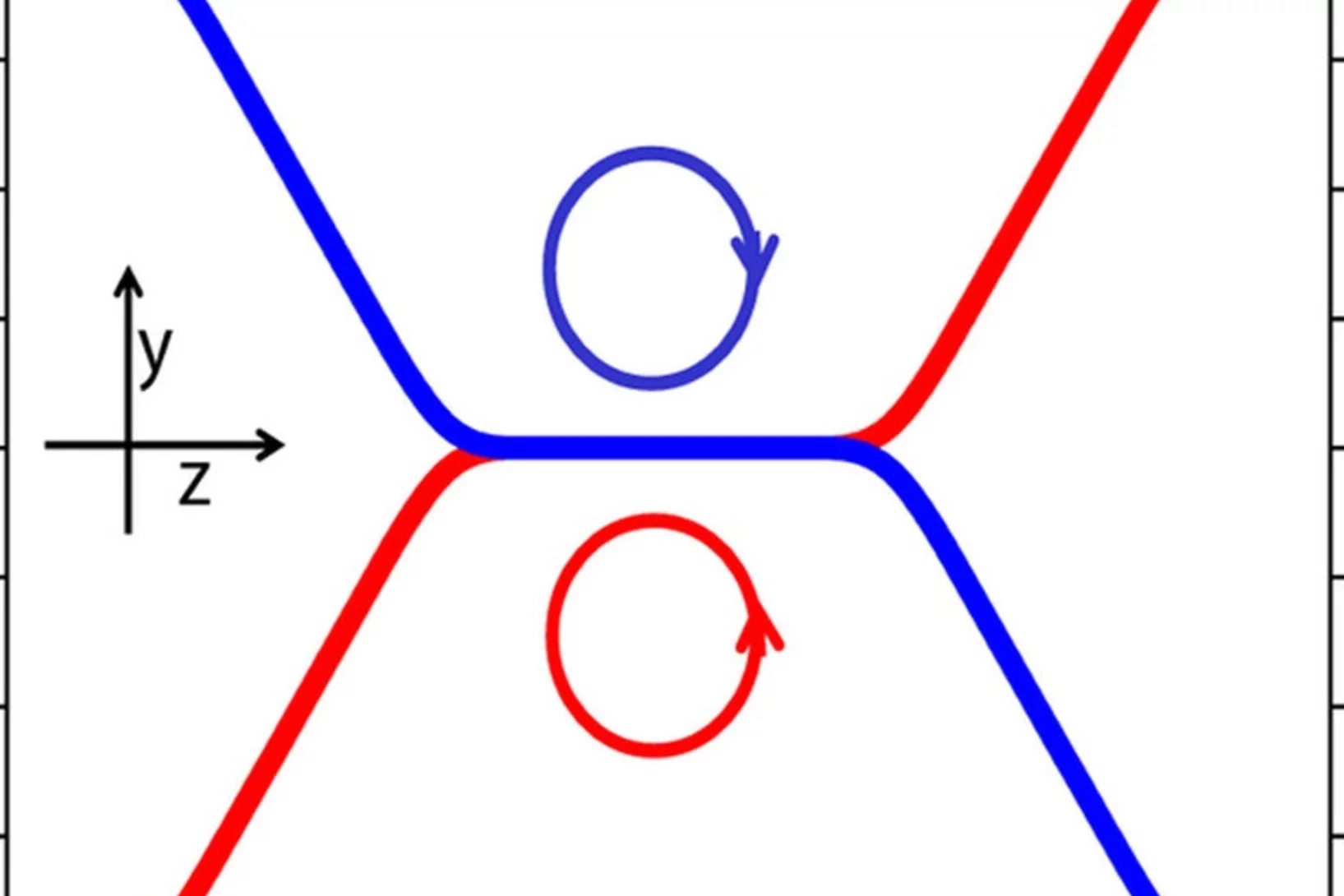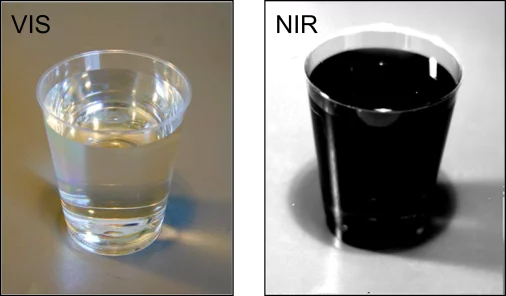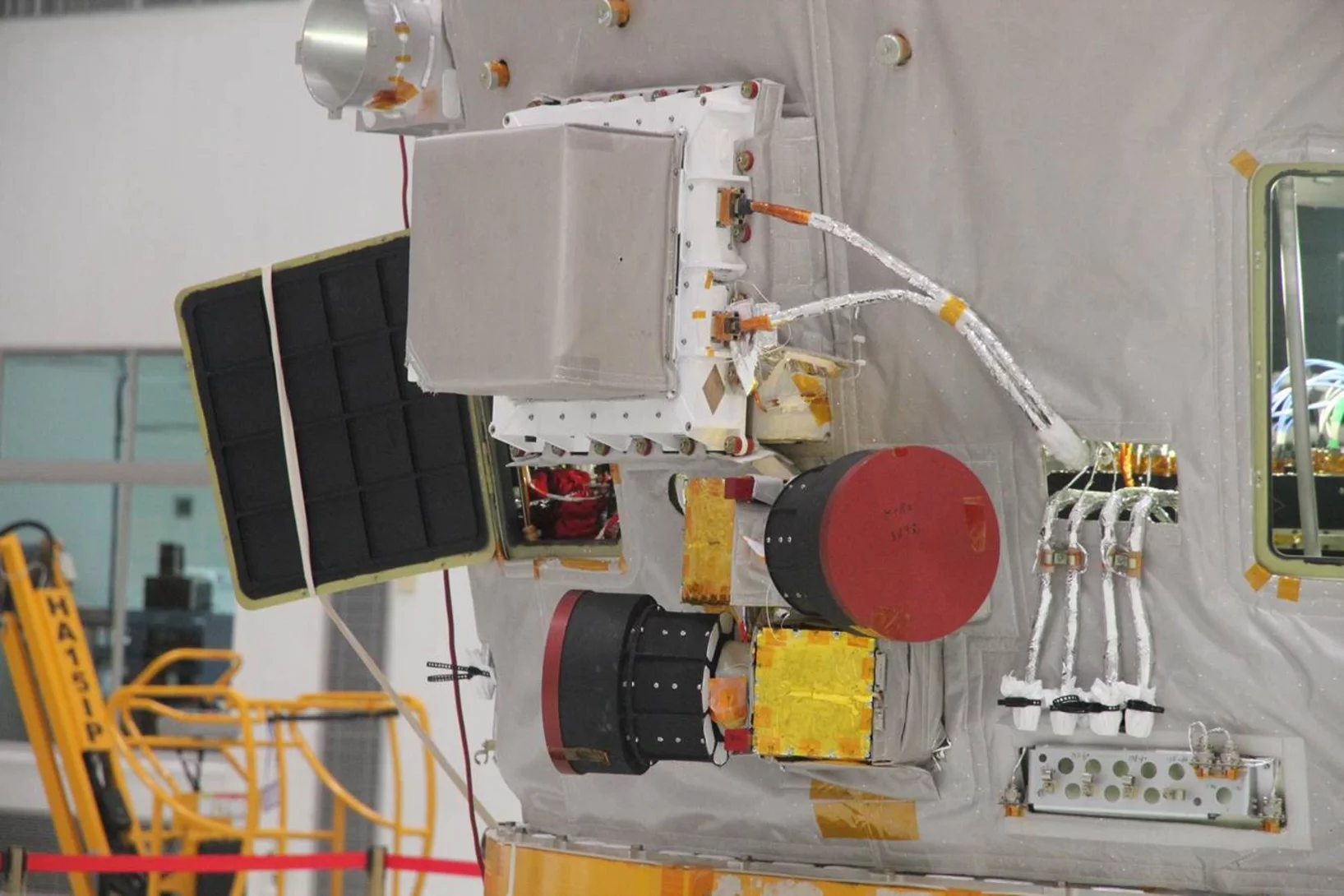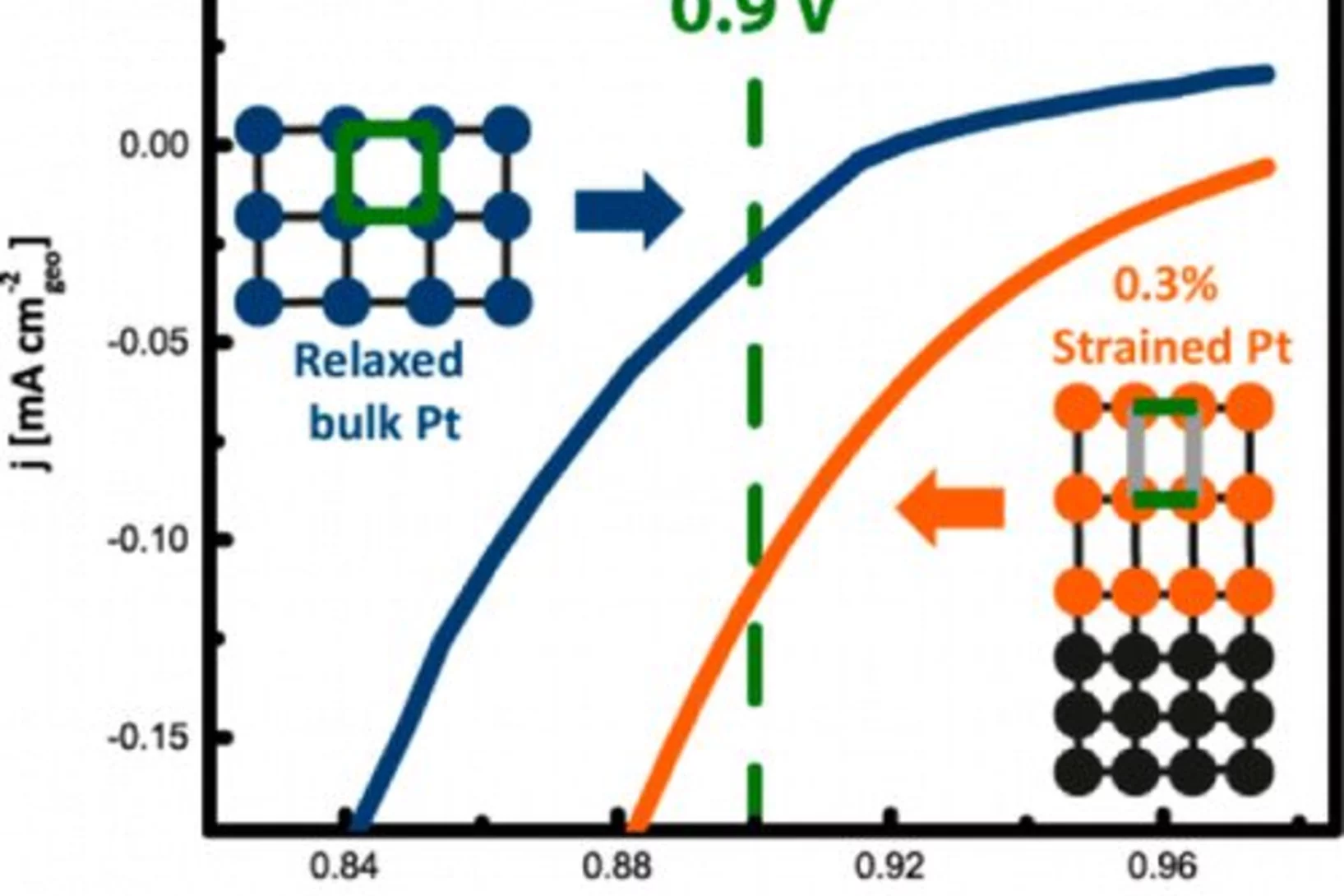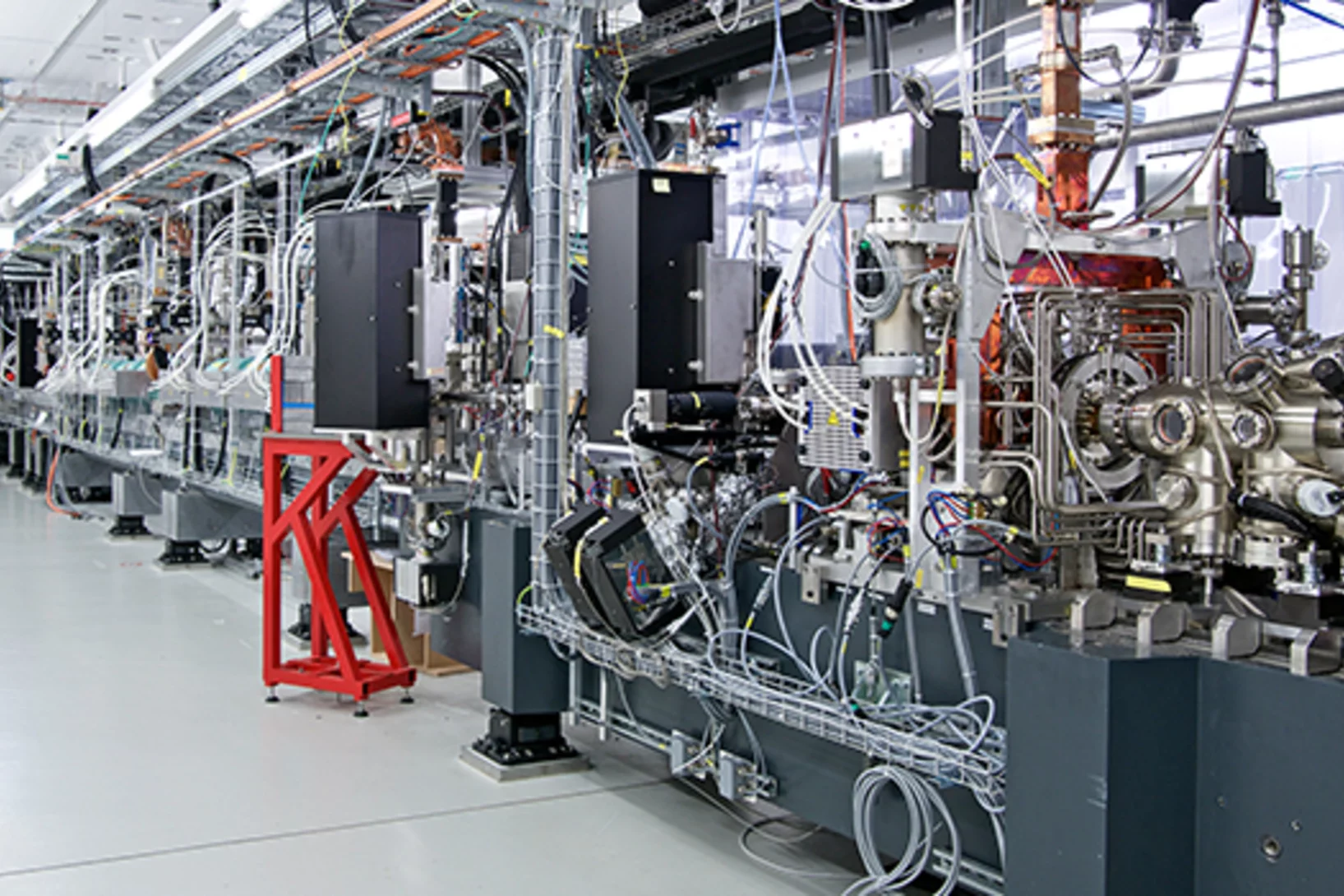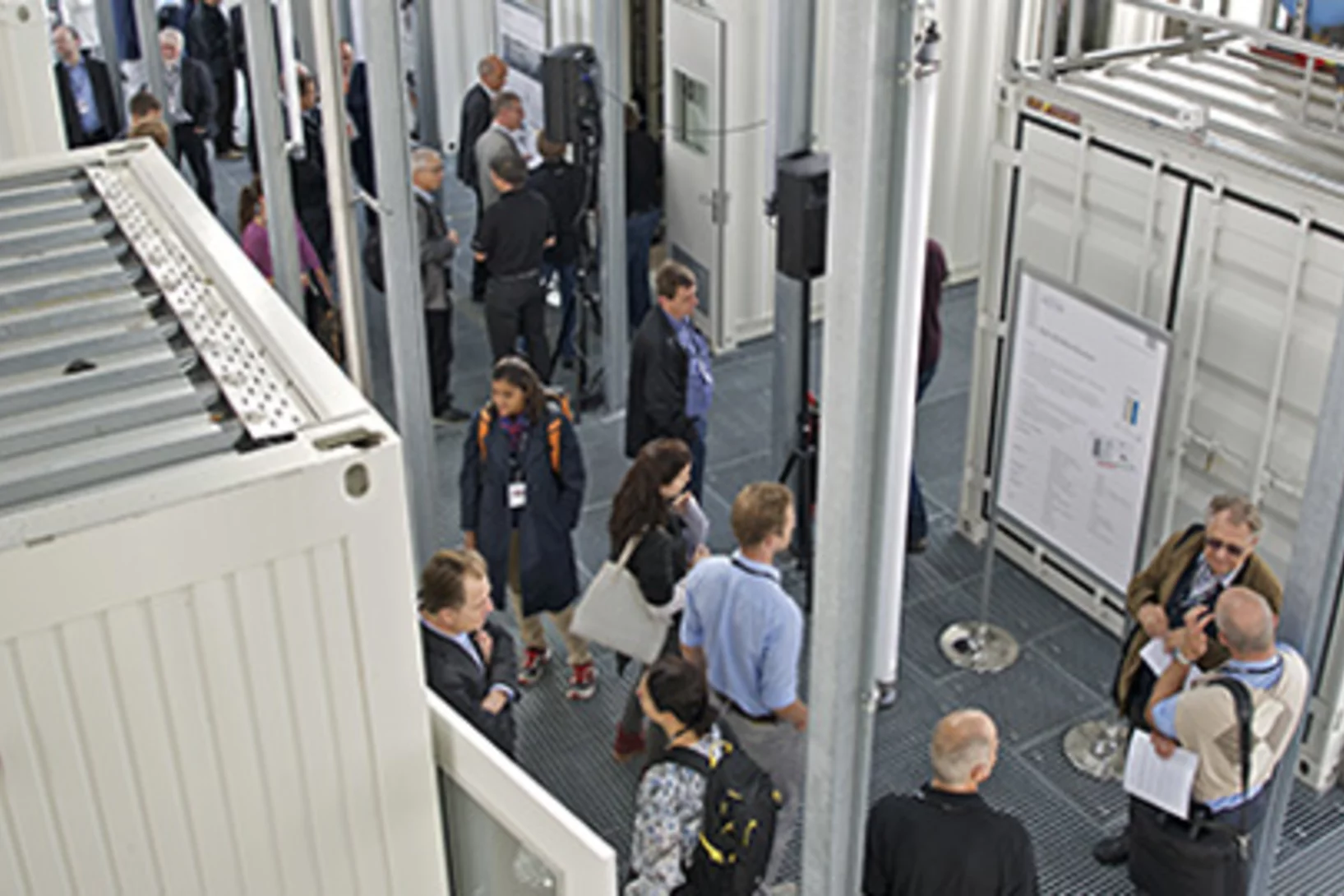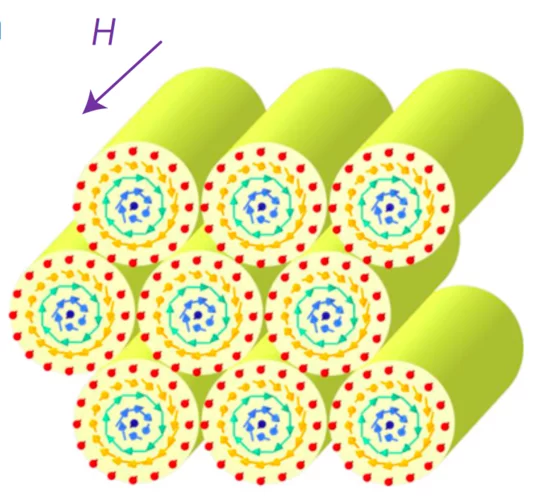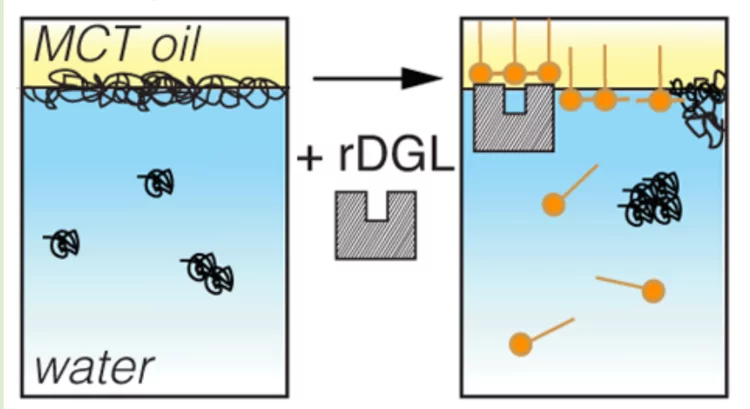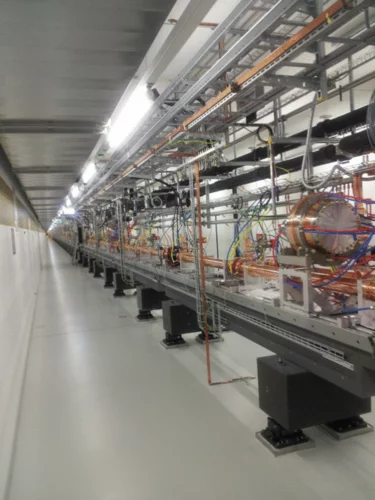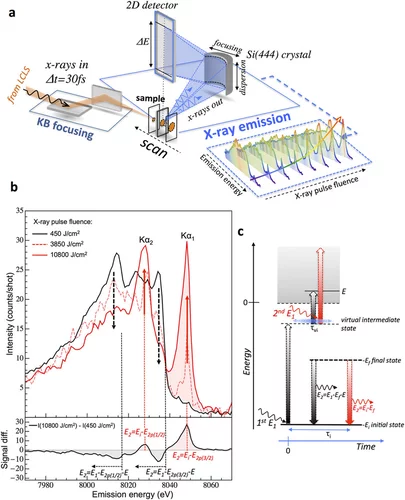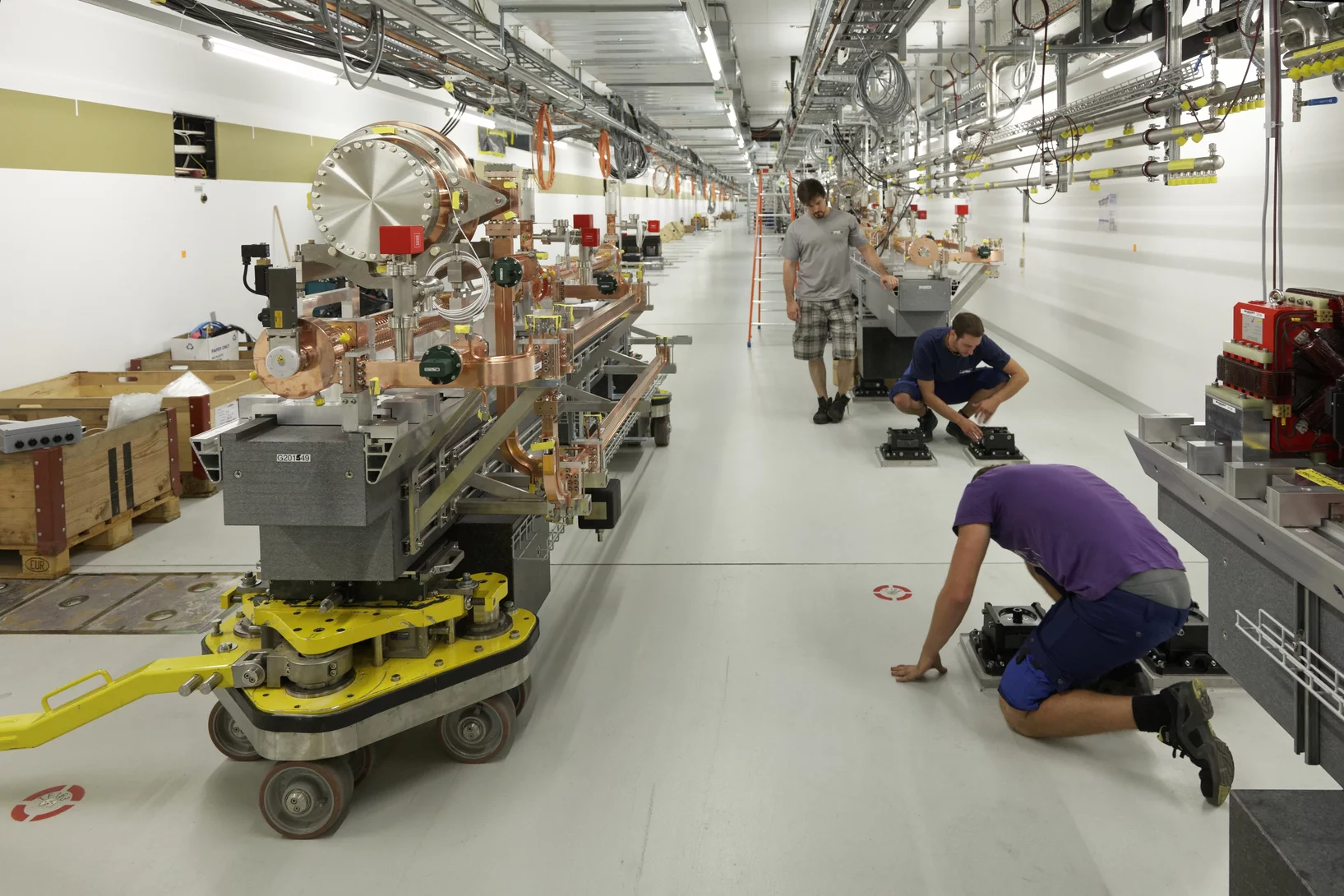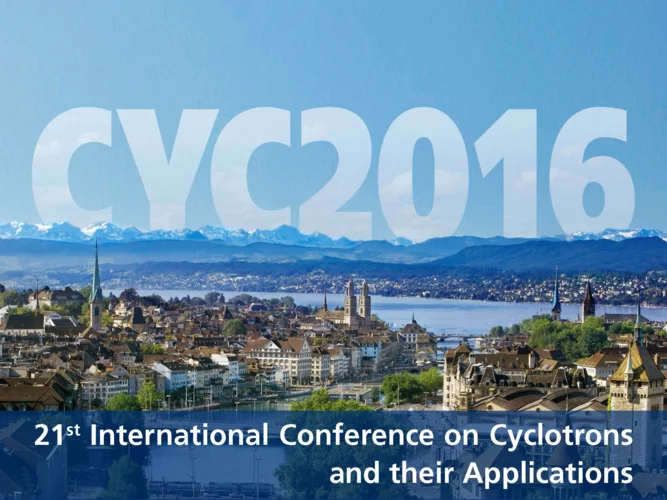Researchers at the Paul Scherrer Institute PSI are looking for answers to essential questions concerning the underlying structures of matter and the fundamental principles of nature. They study the composition and properties of elementary particles – the smallest building blocks of matter – or investigate the structure of biological molecules and how they perform their function. The knowledge gathered in this way opens up new approaches to finding solutions in science, medicine and technology.
Find out more at Overview Fundamentals of Nature
First protein structure solved using the JUNGFRAU detector!
JUNGFRAU is a charge-integrating, two-dimensional pixel detector developed at the Paul Scherrer Institut for use at free-electron lasers, in particular SwissFEL, and synchrotron light sources. On the 10th October, the first protein crystallography experiment using the JUNGFRAU detector, was performed at the beamline X06SA (PXI) of the Swiss Light Source by the members of the Protein Crystallography and Detectors groups at PSI.
Radioactive targets produced at PSI enable improving the Big Bang Theory
One of the long-lasting unsolved problems in Nuclear Astrophysics is the so-called "Cosmological Li Problem", i.e. the large discrepancy between the primordial 7Li abundance predicted by models of Big Bang Nucleosynthesis and the one inferred from astronomical observation. The study of the production/destruction rates of the radioactive precursor 7Be is one of the clues for solving this problem.
Technology award for microneedle-optofluidic sensor system
Sahan Ranamukhaarachchi, PhD student from UBC in Vancouver, won the 2016 "Brian L. Barge Award for Excellence in Microsystems Integration" for his work on a biosensing platform with integrated hollow microneedles carried out at PSI in 2015 in collaboration with Dr. Victor Cadarso and Dr. Celestino Padeste.
Kinetic studies of the Pt carbonate-mediated, room-temperature oxidation of carbon monoxide by oxygen
The kinetics involved in ambient-temperature catalytic oxidation of carbon monoxide by oxygen over a Pt/Al2O3 catalyst is evaluated under periodic redox operation using combined mass spectrometry, diffuse reflectance infrared spectroscopy and time-resolved Pt L3-edge X-ray absorption spectroscopy.
Effect of disorder on a pressure-induced z = 1 magnetic quantum phase transition
Pressure-induced ordering close to a z = 1 quantum-critical point is studied in the presence of bond disorder in the quantum spin system (C4H12N2)Cu2(Cl1−xBrx)6 (PHCX) by means of muon-spin rotation and relaxation.
Labile peroxides in secondary organic aerosol
Aerosols, suspended fine liquid or solid particles in the air we breathe, play a central role in many environmental processes through their influence on climate, the hydrological cycle, and their adverse effects on human health. While the mechanisms by which aerosol particles affect our health remain uncertain, the atmospheric oxidation of organic vapors has been shown to be related to the formation of oxygenated organic matter with high oxidative potential, the so-called reactive oxygen species (ROS).
24 hours at the ESI Platform (video)
How can surplus power that can’t be fed into the electric grid be made usable? A fictitious day at the Energy System Integration Platform at the Paul Scherrer Institute PSI.
Selectively conductive or insulating
The material neodymium nickel oxide is either a metal or an insulator, depending on its temperature. The possibility to control this transition electrically makes the material a potential candidate for transistors in modern electronic devices. By means of a sophisticated development of X-ray scattering, researchers at the Paul Scherrer Institute PSI have now been able to track down the cause of this transition: electrons around the oxygen atoms are rearranging.
Molten salt reactors – exploring an alternative
At the Paul Scherrer Institute PSI, a small group of scientists is using theoretical models to explore an alternative for future nuclear reactors: so-called molten salt reactors. This helps to secure Switzerland’s expertise regarding globally relevant questions in the area of nuclear energy and reactor safety, for today and tomorrow.
Completion of the vacuum pipes assembly from injector to front end
On Monday October the 10th the last piece of the vacuum tube was mounted and pumped down. The about 500 m long vacuum chamber from the end of the injector to the photonics front end is now under vacuum. The only missing junction at z=119m between the already operated injector and the rest of SwissFEL will be mounted shortly before the delivery of the operation permit.
Last undulator placed in SwissFEL tunnel
On the 6th of October the last undulator for the ARAMIS beamline was placed into the SwissFEL tunnel. Thanks to the efficiency and motivation of the different groups involved with undulator preparation, all 12 undulators were assembled, measured and installed in the tunnel between the 2nd of February 2016 and the 6th of October 2016.
Nanoparticle-Based Magnetoelectric BaTiO3–CoFe2O4 Thin Film Heterostructures for Voltage Control of Magnetism
Multiferroic composite materials combining ferroelectric and ferromagnetic order at room temperature have great potential for emerging applications such as four-state memories, magnetoelectric sensors, and microwave devices.
Physicists at the PSI’s large-scale research facilities are thinking beyond the Nobel Prize theories
This year’s Nobel Prize for Physics goes to David Thouless, Duncan Haldane, and Michael Kosterlitz. The Academy also cited, in its background report, experiments carried out by Michel Kenzelmann, who today is a laboratory head at the PSI. He and other researchers at the PSI continue to do experiments based on the theories now honoured by the Nobel Prize.
Magnetodielectric detection of magnetic quadrupole order in Ba(TiO)Cu4(PO4)4 with Cu4O12 square cupolas
In vortex-like spin arrangements, multiple spins can combine into emergent multipole moments. Such multipole moments have broken space-inversion and time-reversal symmetries, and can therefore exhibit linear magnetoelectric (ME) activity. Three types of such multipole moments are known: toroidal; monopole; and quadrupole moments. So far, however, the ME activity of these multipole moments has only been established experimentally for the toroidal moment.
ERC funding of €2.4 million for research on fundamental interactions in magnets
Christian Rüegg has been awarded a prestigious Consolidator Grant from the European Research Council (ERC). With this funding he will continue to investigate how the smallest magnetic building blocks of matter interact.
Kinetic studies of the Pt carbonate-mediated, room-temperature oxidation of carbon monoxide by oxygen over Pt/Al2O3 using combined, time-resolved XAFS, DRIFTS, and mass spectrometry
The kinetics involved in novel ambient-temperature mechanism for the catalytic oxidation of carbon monoxide by oxygen over a Pt/Al2O3 catalyst is evaluated within a periodic redox operation paradigm using combined mass spectrometry (MS), diffuse reflectance infrared spectroscopy (DRIFTS), and time-resolved Pt L3-edge XAFS. A high-wavenumber (ca. 1690 cm-1) carbonate species are shown to be associated with a room-temperature redox process occurring in a fraction of the Pt atoms present in the catalyst.
Oxygen Evolution Reaction (OER)
Iridium oxides
Iridium oxides have been investigated by XAS under operando conditions to demonstrate the effect of size on OER.
Realizing topological stability of magnetic helices in exchange-coupled multilayers for all-spin-based system
Topologically stabilized spin configurations like helices in the form of planar domain walls (DWs) or vortex-like structures with magnetic functionalities are more often a theoretical prediction rather than experimental realization. In this paper we report on the exchange coupling and helical phase characteristics within Dy-Fe multilayers. The magnetic hysteresis loops with temperature show an exchange bias field of around 1.0 kOe at 10 K.
Infrared imaging sheds new light on the condensation/evaporation process
Researcher at PSI (NES/LRT) have brought modern infrared technologies into their large thermal-hydraulic facility, called LINX, to obtain insights into condensation/evaporation process occurring under thermodynamic conditions resembling those of a nuclear power plant containment during a severe accident scenario. In such a scenario, condensation is of prime importance to control the thermodynamic state of the containment. It affects the pressure history, the overall gas (steam, hydrogen) and fission product distribution within this last barrier. Better understanding of these phenomena under accident conditions is essential to properly predict the accident evolution.
POLAR experiment successfully launched on Chinese spacecraft
The second Chinese space laboratory satellite Tian Gong 2 was successfully launched from the Jiuquan Satellite Launch Center on September 15th, 2016 at 22:04 BTC (UTC+8h). Among more than ten instruments onboard it also brought to space the only non-Chinese experiment POLAR - the hard X-ray polarimeter.
Investigating the Role of Strain toward the Oxygen Reduction Activity on Model Thin Film Pt Catalysts
Environmentally friendly energy conversion devices such as fuel cells are becoming more and more attractive. However, major impediments to large-scale application still arise on the material side, related to the cost and poor performance of the cathode catalyst. State-of-the-art electrocatalysts are all Pt-based materials, suffering from poor electrochemical oxygen reduction kinetics.
SwissFEL in the home stretch: The first electrons are here
SwissFEL building, 24 August 2016: In the control room above the beam tunnel of the X-ray free-electron laser SwissFEL, the atmosphere is intense and focussed. Marco Pedrozzi’s team has big plans for this late August afternoon. The last adjustments have been made — it’s time to press the big button and start up the electron source. The goal: SwissFEL should generate its first electrons. A report.
Renewable energy: Experimental platform ESI is starting up
This fall, the time has come: The Energy System Integration Platform at the Paul Scherrer Institute PSI goes into operation. Today, in the framework of the double conference Networked Energy Research Switzerland, it was presented to the media and around 150 representatives from politics, industry, and science.
Robust metastable skyrmions and their triangular–square lattice structural transition in a high-temperature chiral magnet
Skyrmions, topologically protected nanometric spin vortices, are being investigated extensively in various magnets. Among them, many structurally chiral cubic magnets host the triangular-lattice skyrmion crystal (SkX) as the thermo- dynamic equilibrium state. However, this state exists only in a narrow temperature and magnetic-field region just below the magnetic transition temperature Tc, while a helical or conical magnetic state prevails at lower temperatures.
Blocking Gastric Lipase Adsorption and Displacement Processes with Viscoelastic Biopolymer Adsorption Layers
Delayed fat digestion might help to fight obesity. Fat digestion begins in the stomach by adsorption of gastric lipases to oil/water interfaces. In this study we show how biopolymer covered interfaces can act as a physical barrier for recombinant dog gastric lipase (rDGL) adsorption and thus gastric lipolysis.
Archive of Seminars
Archive of Seminars 2023-2019
First acceleration with the SwissFEL C-band module
On Thursday 08/09/2016, the first C-band module boosted an electron beam from 150MeV to 390 MeV. This is the first beam acceleration test of a C-band module in PSI and is an important milestone for the project, since the main accelerator consists of 26 C-band modules of the same kind.
Establishing nonlinearity thresholds with ultraintense X-ray pulses
The advent of X-ray free electron lasers (XFELs) is opening the ability to reach extremely high photon numbers within ultrashort X-ray pulse durations and is leading to a paradigm shift in our ability to explore nonlinear X-ray signals.
Completion of SwissFEL LINAC
On September 13th, the last two modules of the linear accelerator were installed in the SwissFEL tunnel. This means that 26 accelerating modules are installed now. One accelerating module consists of four accelerating structures. In total there are 104 accelerating structures, with a lenght of 2 m each.
21st International Conference on Cyclotrons and their Applications
The 21st conference in this series takes place from September 12 to 16, 2016 at the Federal Institute of Technology in Zürich. The cyclotron is a simple and efficient particle accelerator and its invention for the purpose of performing fundamental research dates back to 1929. Ernest Lawrence received the Nobel Prize for his idea in 1939. Today cyclotrons are used in a broad range of applications from large and complex facilities for basic research to highly optimized and cost effective solutions for industrial and medical applications. The series of cyclotron conferences provides a forum for the world leading experts to meet and to discuss technological and physics advancements in the field.

